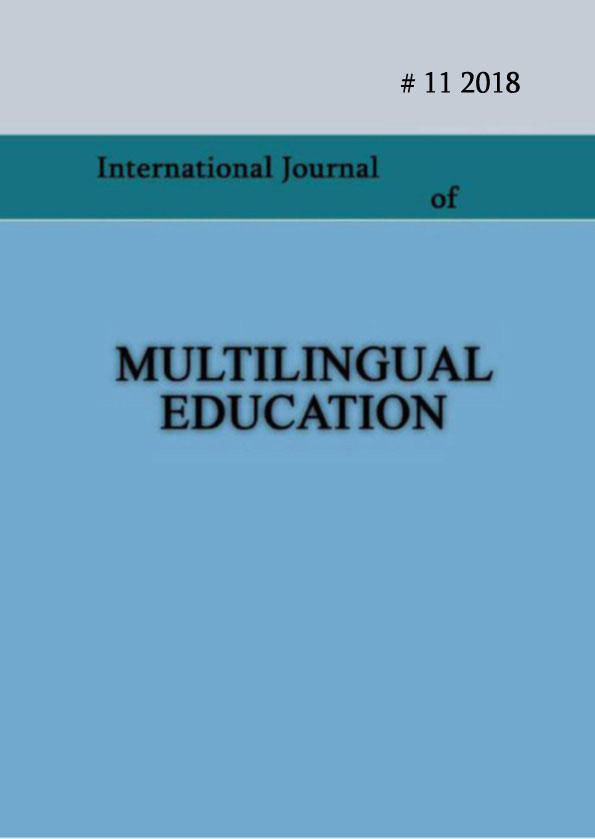The Role of Mother Tongue in Second Language Acquisition
Keywords:
Sociolinguistics, first language/mother tongue, second language, language learning, sociolinguistic competence.Abstract
In the first part of this paper, the author discusses the importance of the first language in the process of learning English as a second language as explored by previous researchers. In the second part, the author describes the results obtained, in two small case studies, among the students of different ethnic backgrounds learning the English language. The present paper consists of two parts. The first part is comprised of online questionnaire answers provided by Georgian, Mandarin, Hindi and Lithuanian speakers, where participants were asked to answer questions regarding their experience while learning English and whether they were encouraged to use their MTs in the process. The second study was conducted at the International School of the Hague (ISH). Five students were interviewed and recorded as they shared their experiences of using their MTs during the learning process.
The research generates mixed pictures, however most of the participants agree on the importance of their mother tongues in learning the target language.
References
Andersen, R. W. (1983). “Transfer to somewhere” In Grass and Selinker (eds.) Language transfer in Language Learning. Rowley, Mass: Newbury House.
Burgo, C. (2015). GEESLIN, KIMBERLY L. & AVIZIA YIM LONG. Sociolinguistics and
Bybee, Joan. (2008). Usage-based grammar and second language acquisition. In P. Robinson and N. Ellis (eds.), Handbook of Cognitive Linguistics and Second Language Acquisition. New york: Routledge. 216-236.
Cummins, J. (1979). Linguistic Interdependence and the Educational Development of Bilingual Children.
Review of Educational Research, 49 (2), 222 - 251.
Cummins, J. (2000). Language, Power and Pedagogy: Bilingual Children in the Crossfire.
Cummins, J. (2001). Bilingual children’s mother tongue: Why is it important for education Sprogforum Vol. 19,
pp. 15 - 20
Ellis, R. (1985). Understanding second language acquisition. Oxford: Oxford University Press.
Gasser, M. (1990). Connectionism and universals of second language acquisition. Studies in Second Language Acquisition, 12, 179 – 199.
Lado, R. (1957). Linguistics across cultures: Applied linguistics for language teachers. Ann Arbor, MI: University of Michigan Press.
Lado, R. (1964). Language teaching: A scientific approach. New York: McGraw-Hill, Inc. MacWhinney, B. (2008). A unified model. In P. Robinson & N. Ellis (Eds.), The Handbook of Cognitive
Linguistics and Second Language Acquisition (pp. 341 – 371). Routledge.
Second Language Acquisition: Learning to Use Language in Context. New York, NY and London, UK: Routledge, 2014.
Published
How to Cite
Issue
Section
License
Copyright (c) 2023 Sopio Totibadze

This work is licensed under a Creative Commons Attribution-NonCommercial 4.0 International License.
Copyright (c) - Authors who publish with this journal agree to the following terms: Authors retain copyright and grant the journal the right of first publication with the work simultaneously licensed under a Creative Commons Attribution-Noncommercial 4.0 International License, which allows others to share the work with an acknowledgement of the work's authorship and initial publication in this journal. Authors are permitted and encouraged to post their work online (e.g., in institutional repositories or on their personal website) prior to and during the submission process, as it can lead to productive exchanges, as well as earlier and greater citation of published work (see The Effect of Open Access). Authors may enter into separate, additional contractual arrangements for the non-exclusive distribution of the journal's published version of the work (e.g., post it to a repository or publish it in a book), with an acknowledgement of its initial publication in this journal.

